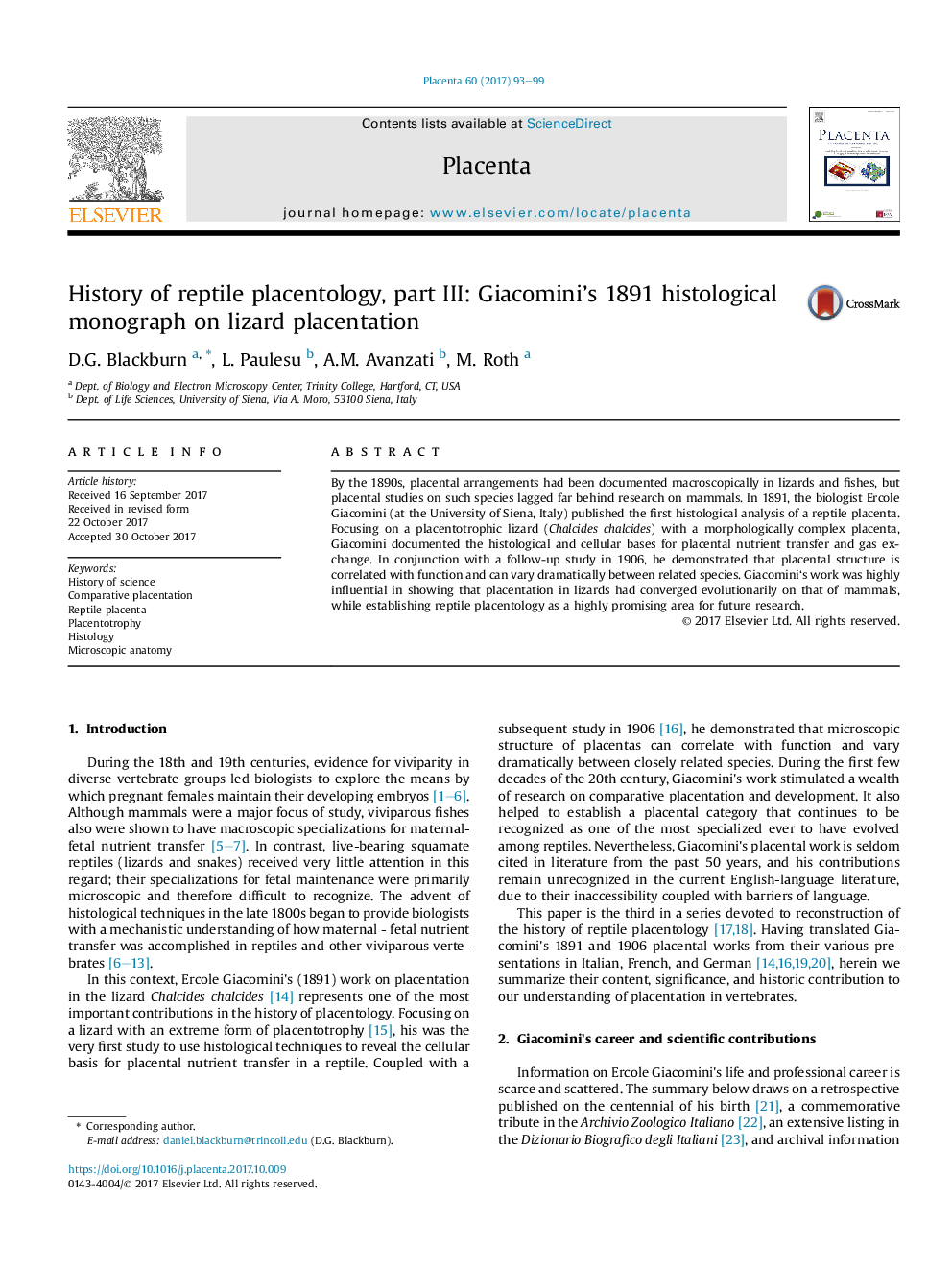| Article ID | Journal | Published Year | Pages | File Type |
|---|---|---|---|---|
| 8626507 | Placenta | 2017 | 7 Pages |
Abstract
By the 1890s, placental arrangements had been documented macroscopically in lizards and fishes, but placental studies on such species lagged far behind research on mammals. In 1891, the biologist Ercole Giacomini (at the University of Siena, Italy) published the first histological analysis of a reptile placenta. Focusing on a placentotrophic lizard (Chalcides chalcides) with a morphologically complex placenta, Giacomini documented the histological and cellular bases for placental nutrient transfer and gas exchange. In conjunction with a follow-up study in 1906, he demonstrated that placental structure is correlated with function and can vary dramatically between related species. Giacomini's work was highly influential in showing that placentation in lizards had converged evolutionarily on that of mammals, while establishing reptile placentology as a highly promising area for future research.
Related Topics
Life Sciences
Biochemistry, Genetics and Molecular Biology
Developmental Biology
Authors
D.G. Blackburn, L. Paulesu, A.M. Avanzati, M. Roth,
